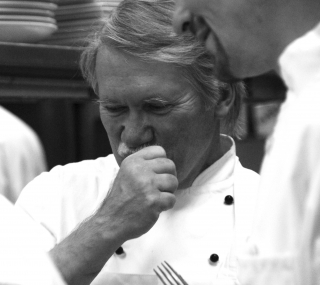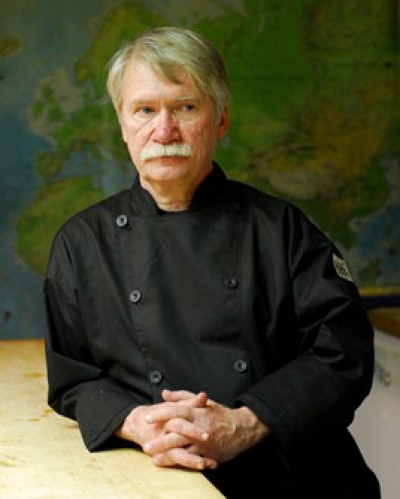
Think Tank: Start Them Off on the Right Foot
Wednesday, 23 September 2015 12:12As a new term begins, here are eight lessons you must teach each of your students if he and she are to become leaders in our industry.

As a new term begins, here are eight lessons you must teach each of your students if he and she are to become leaders in our industry.

Becoming unique, contemporary and benchmark setting defines a brand. Here’s a checklist to determine if your program is forward thinking or merely churning out graduates. Start by asking yourself, “How is my program perceived in the marketplace?”
 What can the graduate do for the school? Says Chef Sorgule, the proper question should be, What can the school do for the graduate?
What can the graduate do for the school? Says Chef Sorgule, the proper question should be, What can the school do for the graduate?
By Paul Sorgule, MS, AAC
Considering the ongoing questions about the value of a degree and the ever-changing landscape of the food business, I am constantly giving thought to how administrators of culinary programs can increase the perceived and real value of an education in food.
Everyone is certainly aware of the pressure pertaining to value being passed on to institutions from accrediting bodies, especially those preparing students for technical trades. The answer moving forward might very well be in shifting how we look at a degree.
For far too long, earning a college education was a two- or four-year process that students went through in pursuit of a degree. In other words, students passed through the college experience, incurring significant debt, with closure coming on graduation day.
The connections that continue to exist between the college and the graduate are limited to alumni newsletters, reunions and gift requests from the Institutional Advancement Office. We might invite an occasional graduate back to speak to a class or provide a demonstration, but, for the most part, the theme is: “What can the graduate do for the school, rather than what can the school do for the graduate.”
 Graduates will not remember many specifics of their educations, and will even realize that so much they thought would be important to their life paths isn’t. But they will remember those who influenced their learning in meaningful ways.
Graduates will not remember many specifics of their educations, and will even realize that so much they thought would be important to their life paths isn’t. But they will remember those who influenced their learning in meaningful ways.
By Paul Sorgule, MS, AAC
Another academic year has come and gone. After students walk across the stage, every administrator, faculty member, student and parent has an opportunity to reflect on the two or four years that went into making graduation possible.
Deans and directors are beginning to plan time into their summer schedules for review of curriculum, some overdue maintenance on kitchen facilities, completing outcome assessment materials from the year coming to a close, and justifying budgets nearing the end of a fiscal year.
Faculty are putting course materials to bed and cleaning offices as they head into some well-earned time off. Students are breathing a sigh of relief combined with that uneasy feeling as they enter the workforce, and parents are still glowing with pride—knowing that their son or daughter has just completed another phase in his or her life.
 As their career paths become clear, students will inevitably emulate what they’ve experienced in our classrooms and kitchens. Thus, our responsibility is great. Which attitudes, aptitudes and beliefs do we want graduates to portray throughout their careers as a result of our actions?
As their career paths become clear, students will inevitably emulate what they’ve experienced in our classrooms and kitchens. Thus, our responsibility is great. Which attitudes, aptitudes and beliefs do we want graduates to portray throughout their careers as a result of our actions?
By Paul Sorgule, MS, AAC
As many schools head into the final stretch of an academic year, I thought that it might be an opportune time to reflect on the responsibility we share as a catalyst for positive change in the food industry.
Each student who walks across that commencement stage in 2015 and beyond could be a person who helps to make our industry that much better; a person who may very well define what it means to be a successful restaurateur, chef, research chef, pastry chef, teacher, author or advocate for food integrity in America.
As educators we have an obligation and a wonderful opportunity to set the stage for this to take place. Students will inevitably emulate what they experience in classrooms and kitchens as their career paths become clear. You can, and do, make a difference every day and should never lose sight of the power and responsibility that coexist.